#white label telemedicine app
Explore tagged Tumblr posts
Text
White-Label Telemedicine Platform: A Complete Overview
A White-Label Telemedicine platform is a tool that lets you talk to a doctor online instead of visiting their clinic. Telemedicine is the future of healthcare. It lets patients talk to doctors quickly and conveniently.
Even before the pandemic, the telehealth market was expected to be worth money by 2027. But now, lots more people want to use telemedicine. It’s a way to talk to a doctor without leaving your house. That’s why telemedicine services platforms are becoming popular and making lots of money.
Many hospitals and healthcare groups are thinking of adding telemedicine to their services. Doing this now is easier because technology is better and equipment is more available. If you want to create your telemedicine platform, you can use a White Label Telemedicine platform. It’s an easy way to get your platform up and running quickly!
What is a White-Label Telemedicine Platform?
The telemedicine platform is a portal you can create to provide healthcare to patients via the Internet. It allows healthcare professionals to assess, diagnose and treat patients using telemedicine technologies remotely.
Now you can build it from scratch or use a white label telemedicine app development solution. With the help of a white-label telemedicine platform, you can customize, rebrand, and resell as per your requirements. A white label healthcare app offers not one but several advantages over a custom telemedicine application.
Original Blog Source: https://www.vcdoctor.com/blog/white-label-telemedicine-platform
#white label telemedicine#white label telehealth#white label telemedicine app#white label telemedicine platform#white label telehealth platform#white label healthcare#telemedicine white label#white label hipaa software solution#vcdoctor
0 notes
Text
Sehet is a telemedicine platform that allows patients to carry out consultations with doctors online. Through this telemedicine is not only made easy but also accessible to a wider patient base making consultations hassle-free.
Sehet is one of the best Online doctor consultation apps in India, offering a one-stop hub for all your healthcare needs. Our extensive network of board-certified doctors covers various medical fields, including dental care, child care, skin care, mental health, and more. Schedule hassle-free online consultations from the comfort of your home and receive personalized advice, instant prescriptions, and solutions for all your health concerns. Sehet makes quality healthcare accessible and affordable.
At Sehet, our goal is clear: to support healthcare service providers with user-friendly tools and technology that can enhance patient care. Our mission is to help healthcare providers simplify healthcare, allowing healthcare to focus on what matters. With our services, we smoothly schedule appointments, manage digital prescriptions, and maintain health records. Therefore, ensuring healthcare remains more accessible and efficient to both patients and providers. At Sehet, we are committed to reshaping healthcare delivery by prioritizing quality care. Together, let's make healthcare more efficient, accessible, and patient-centered.
Read More: https://sehet.in/
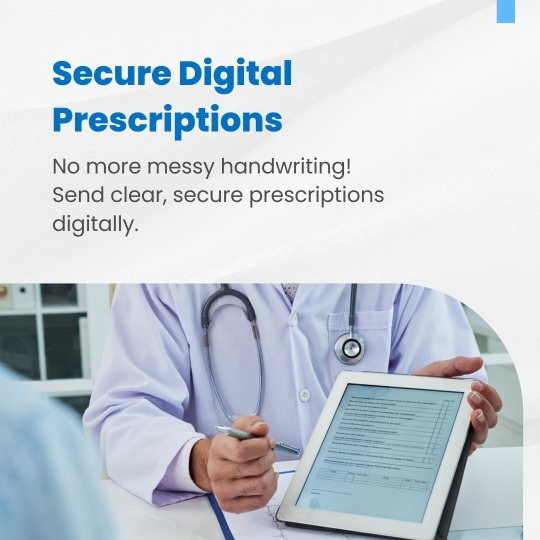
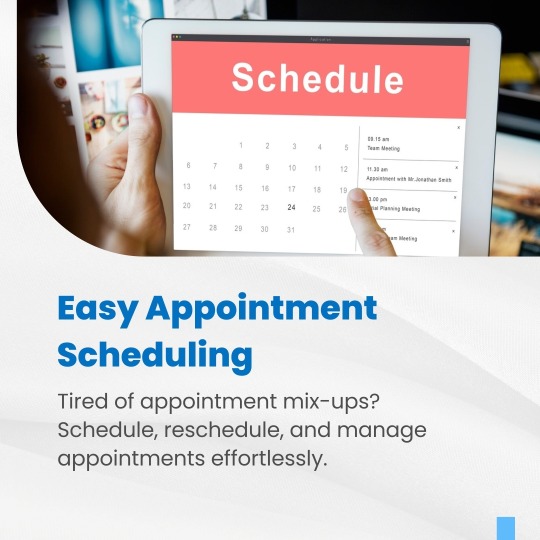
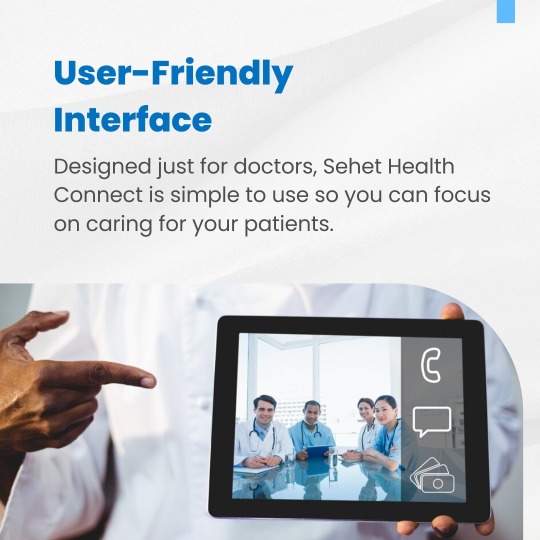
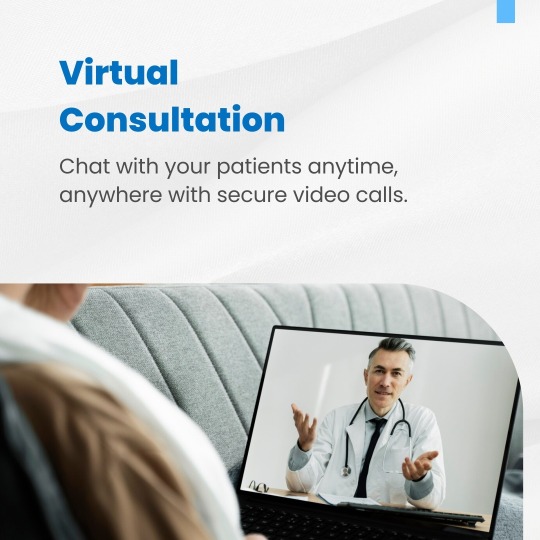
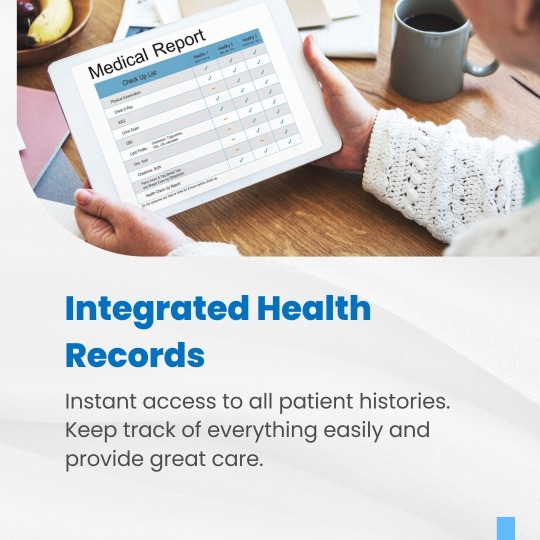
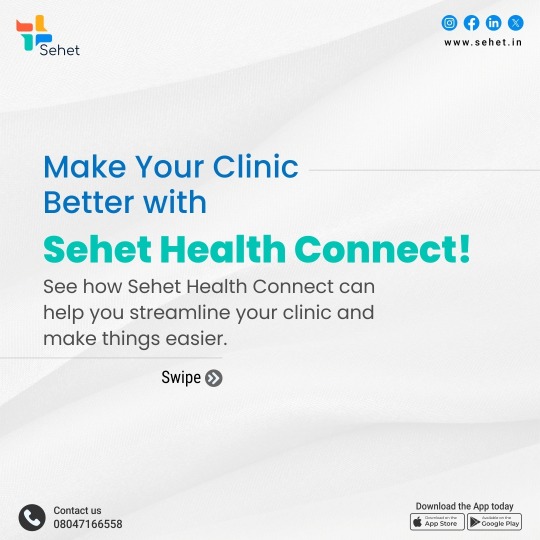
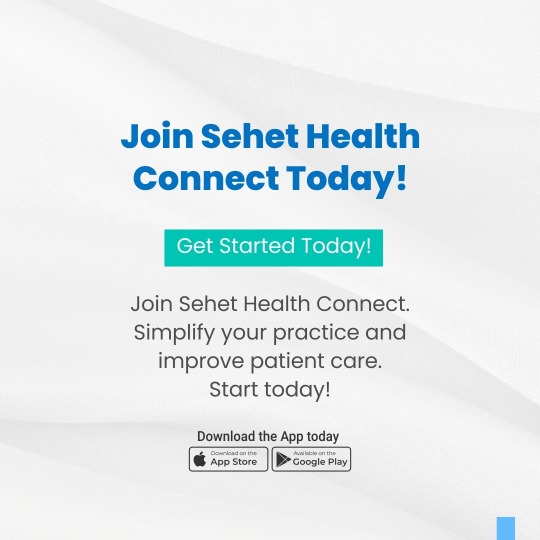
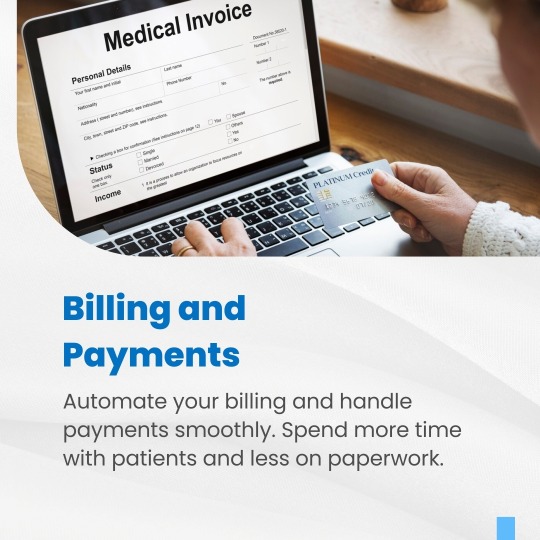
#Sehet#Online doctor consultation apps in India#online medical consultation#Healthcare Services#Telemedicine India#Digital Health India#Teleconsultation#Health App#Health Solutions#White Label Solutions
1 note
·
View note
Text
Why User-Centric Design Matters in Healthcare Apps
The healthcare industry is evolving rapidly, and the demand for digital solutions, especially mobile apps, has soared in the last few years. As someone involved in healthcare app design, I’ve found that crafting an effective healthcare app involves more than technical prowess. It requires empathy, insight, and a keen understanding of the needs of both patients and healthcare providers.
In this article, I’ll take you through my experience and best practices for designing and developing healthcare apps, backed by relevant data and statistics from industry experts.
Why Build a Healthcare App?
Healthcare apps have the potential to change lives by making healthcare more accessible, affordable, and user-friendly. With over 52% of smartphone users actively engaging with health-related apps, the demand for effective mobile healthcare solutions is indisputable. From remote consultations to chronic disease management, healthcare apps are reshaping how we interact with health information and services.
As we consider developing healthcare apps, it’s crucial to address a broad set of challenges, including data privacy, reliability, and usability—elements that can make or break the user experience in a high-stakes industry.
Step 1: Defining Your Healthcare App’s Purpose
Before diving into design, defining the app’s purpose and identifying your target users is vital. Are you looking to help chronic disease patients manage their condition, or are you aiming for a telehealth app for remote consultations?
The variety of healthcare apps is vast, as Codiant explains, covering areas like fitness and wellness, diagnostics, telemedicine, mental health, and medication management. Each type serves a distinct purpose, so the design and development process should cater to specific user needs and regulatory requirements.
Key Insight: Focus on User Needs
Developing a successful healthcare app means solving real-life challenges for users. According to Appinventiv, user-centric design is non-negotiable. User-centered features such as intuitive navigation, clear prompts, and access to essential information can significantly impact user retention and satisfaction.
Step 2: Ensuring Compliance with Regulations
One of the most critical aspects of healthcare app development in the USA is compliance. Whether you’re creating a white-label healthcare app or a fully customized solution, understanding and adhering to regulatory standards like HIPAA (Health Insurance Portability and Accountability Act) in the U.S. is essential.
The team at Radixweb underscores the importance of prioritizing data security and privacy, especially given that healthcare apps handle sensitive patient information. Non-compliance can lead to hefty fines and, more importantly, a loss of trust among users.
Key Insight: Privacy and Security Are Paramount
From my experience, addressing security from the very start—during the design phase—pays off. Implementing robust security protocols like two-factor authentication, data encryption, and secure user authentication builds user trust and aligns with regulatory requirements.
Step 3: Designing the User Experience (UX)
Designing a healthcare app is all about ease of use, especially for those who may not be tech-savvy. Statistics show that 40% of patients abandon apps due to complex navigation or poor design. Given these figures, designing a straightforward, user-friendly app can directly impact user engagement.
Essential UX Design Elements:
Simplicity: Healthcare users are diverse. Design your app to be intuitive and accessible for all user groups.
Personalization: By incorporating AI-driven recommendations, such as tailored wellness tips or reminders, you can enhance user satisfaction.
Accessibility: Incorporate accessibility features for visually impaired users, including voice commands and scalable text.
In one of my recent projects, adding personalized reminders and a streamlined, visual-based interface increased user retention by nearly 25%.
Step 4: Selecting the Right Technology Stack
Healthcare app development solutions require the right blend of technologies. Codiant highlights the use of mobile health (mHealth) technologies, including cloud storage and machine learning, as effective in handling complex data structures and enabling real-time monitoring.
When choosing a technology stack, consider scalability, security, and integration capabilities. For example, a telemedicine app might benefit from WebRTC for real-time video consultations, while a fitness tracker app could leverage AI to analyze user behavior.
Key Insight: Prioritize Scalability
As your user base grows, your app’s architecture should support this expansion without compromising performance. Building on a cloud infrastructure provides flexibility and can adapt to increasing demand, ensuring the app remains reliable and functional.
Step 5: Development and Testing
Once the design and technology stack are in place, it’s time to move to development. Agile methodologies are highly effective for healthcare app projects, allowing for iterative improvements and faster releases.
Testing is crucial, as healthcare apps require high reliability. Appinventiv advises rigorous testing, especially for functionality, security, and compliance. In my own projects, I often conduct usability testing with real users to gather feedback and make adjustments, as this approach reveals pain points that developers might overlook.
Key Insight: Test with Real Users
Conducting user testing early can prevent costly changes later. By gathering feedback on usability, performance, and even color schemes, you gain insights that directly enhance user satisfaction and engagement.
Step 6: Launch and Ongoing Maintenance
A successful healthcare app requires continuous updates and maintenance. Technology advances, user expectations shift, and regulatory requirements evolve. A well-planned post-launch strategy should include regular updates, feature enhancements, and performance monitoring to keep the app relevant and functional.
Key Insight: Embrace User Feedback
Post-launch, user feedback is invaluable. It’s the clearest lens into areas for improvement, be it app speed, feature enhancement, or additional functionalities. By building a feedback loop, you ensure the app remains responsive to user needs.
Key Trends Shaping Healthcare App Development in the USA
Telemedicine and Remote Care: With a forecasted market size of $559.52 billion by 2027, telemedicine is a significant growth area. Apps that facilitate remote consultations and virtual care are increasingly valuable.
AI and Machine Learning: From diagnostic tools to personalized health recommendations, AI is transforming healthcare apps. Users appreciate features like symptom checkers or personalized health suggestions.
Integration with Wearables: Integrating wearables with healthcare apps enables real-time health monitoring. As wearable use grows, especially for chronic disease management, this trend is shaping the app development landscape.
Conclusion: Making a Meaningful Impact with Healthcare Apps
Designing and developing a healthcare app that resonates with users and stands the test of time is challenging yet fulfilling. From understanding user needs and complying with strict regulations to adopting the right technology stack, every step in the process is vital to delivering a high-quality, reliable product.
As we’ve seen, today’s healthcare app users expect more personalized, intuitive, and secure experiences. And with the healthcare app market in the USA and globally expected to continue growing, now is the perfect time to embark on this journey. Whether you’re considering a white-label healthcare app or a custom solution, remember that every choice—from design to deployment—can significantly impact users’ lives.
By prioritizing user needs, compliance, security, and technology, we’re not just creating apps. We’re building solutions that empower individuals to take control of their health and improve the healthcare system for everyone.
#hire developers#hire app developer#mobile app development#hire mobile app developers#ios app development#android app development#health and wellness#healthcare#healthylifestyle#physical health#health & fitness#mental health#medicine
0 notes
Text

Being one of the top Telemedicine Application Development Companies, we provide white-label & customized Telemedicine app development services that help you to streamline your workflow – whether you are a doctor, a hospital, or a clinic.
Notification
Reviews & Ratings
Amazing UI/UX
Upcoming & Previous
Appointment List
Filter Option
Payment Options
Home / Clinic Consultation
Video Consultation
Online Scheduling
Medicine Order
View Source: https://www.emedhealthtech.com/products/telemedicine/
#emedhealthtech#healthcare#telemedicine#doctorapp#digitalhealth#onlinepharmacy#epharmacy#healthcareapp#healthcaresoftware#telehealth
0 notes
Text
Exploring the Possibilities of Video SDK and API
Introduction:
In the fast-paced digital era, video content has become a cornerstone of communication, education, entertainment, and business. As businesses and developers strive to create seamless and customizable video experiences, White Label Video Software Development Kits (SDKs) and Application Programming Interfaces (APIs) have emerged as powerful tools. These technologies enable organizations to integrate and customize video calling software services in usainto their applications and platforms, offering a tailor-made user experience without the need to build everything from scratch.
Understanding White Label Video SDKs and APIs:
White Label Video SDKs and APIs are innovative solutions that empower developers to incorporate video capabilities into their applications effortlessly. The term "white label" implies that these tools provide a blank canvas, allowing organizations to brand and customize the video features according to their specific requirements.
SDKs are sets of software tools and libraries that facilitate the development of applications for a particular platform or framework. In the case of video calling app solution in usa, these tools focus on simplifying video-related development tasks. They often include features like video playback, recording, streaming, and collaboration tools.
On the other hand, APIs act as intermediaries, allowing different software applications to communicate with each other. White Label Video APIs provide a standardized way for developers to integrate video functionalities into their applications without delving into the intricacies of video processing and management.
Key Benefits of White Label Video SDKs and APIs:
Rapid Development:
White Label Video SDKs and APIs significantly accelerate development cycles by providing pre-built components and functionalities. Developers can save valuable time and resources, concentrating on enhancing the user experience rather than reinventing the wheel.
Customization and Branding:
One of the standout features of white label solutions is the ability to customize and brand the video experience. Businesses can seamlessly integrate video functionalities into their applications while maintaining a consistent look and feel aligned with their brand identity.
Cost-Effective Solutions:
Building video capabilities from scratch can be resource-intensive. Video conferencing solution providers in usa offer a cost-effective alternative, eliminating the need for extensive development efforts and reducing overall project costs.
Scalability:
These solutions are designed to scale effortlessly, accommodating growing user bases and increasing demands for video-related features. This scalability is crucial for businesses experiencing rapid growth or expecting fluctuations in usage.
Cross-Platform Compatibility:
White Label Video SDKs and APIs often provide cross-platform compatibility, ensuring that video functionalities seamlessly integrate with various operating systems, browsers, and devices. This flexibility is essential for reaching a broader audience.
Security and Compliance:
Many white label video solutions prioritize security features, ensuring the protection of sensitive data and compliance with industry regulations. This is especially crucial for applications dealing with confidential or private content.
Use Cases:
E-Learning Platforms:
White Label Video SDKs and APIs are instrumental in enhancing e-learning platforms by providing features like video lectures, interactive sessions, and collaborative learning tools.
Video Conferencing Applications:
Businesses can integrate these solutions into their communication platforms, adding video conferencing capabilities with a personalized touch.
Social Media Apps:
Social media applications leverage White Label Video SDKs and APIs to enable users to share and consume video content seamlessly while maintaining the platform's unique branding.
Healthcare Telemedicine Solutions:
In the healthcare sector, video capabilities integrated with white label solutions facilitate remote consultations, diagnostics, and patient engagement.
Conclusion:
White Label Video SDKs and APIs have become indispensable tools for developers and businesses seeking to harness the power of best video conferencing software services in usa in their applications. The ability to customize, brand, and rapidly deploy video functionalities not only saves time and resources but also opens up new possibilities for innovation and user engagement. As the digital landscape continues to evolve, the adoption of these solutions is likely to grow, reshaping the way we experience and interact with video content across various domains.
0 notes
Text
1 note
·
View note
Text
White Label Solutions: The Ultimate Branding Strategy For Businesses
Introduction
In a rapidly evolving business landscape, where differentiation is key to success, White Label Solutions has emerged as the ultimate branding strategy. These solutions offer a unique approach to branding and customization, allowing businesses to put their distinct mark on a wide range of products and services.
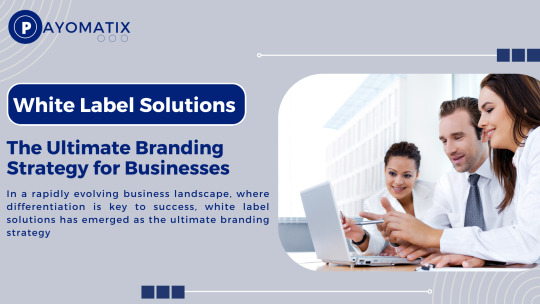
What Are��White Label Solutions?
White Label Solutions, often referred to as “private label” or “rebrandable” solutions, are products or services provided by one company that another company rebrands and sells as its own. This concept has gained significant traction in various industries, from software and apps to payment solutions.
The Power Of Branding And Customization
Consistent Brand Identity: White Label Solutions allow businesses to maintain a consistent brand identity across various services. From incorporating your logo and color scheme to tailoring user interfaces, these solutions ensure that every touchpoint reflects your brand.
Competitive Edge: Customization is the name of the game. With White Label Solutions, you can offer unique, tailor-made services that stand out in a crowded marketplace. This differentiation can be a game-changer in attracting and retaining customers.
Customer Trust: Consumers tend to trust brands they recognize. By leveraging White Label Solutions, you’re essentially capitalizing on established brands, even if you’re a smaller player. This can boost trust and credibility among your target audience.
Time and Cost-Efficiency: Developing a new product or service from scratch can be time-consuming and expensive. White Label Solutions provides a shortcut to offering quality services, saving both time and resources.
Applications Across Industries
White Label Solutions find applications across a wide array of industries:
Fintech: Payment gateways, mobile wallets, and investment platforms.
E-commerce: Website builders, shopping carts, and dropshipping solutions.
Digital Marketing: SEO tools, email marketing platforms, and social media management software.
Software Development: Apps and software products.
Healthcare: Telemedicine platforms and health tracking apps.
Conclusion
In the competitive business world, it’s not just about offering products and services; it’s about offering a brand experience. White Label Solutions empowers businesses to do just that. By aligning these solutions with your brand identity, you can leave a lasting impression on your audience and gain a significant competitive edge.
Unlock the potential of White Label Solutions, and witness your brand’s influence expand like never before. It’s the ultimate branding strategy for businesses looking to thrive in today’s dynamic market.
0 notes
Text
A New Era of Doctor-Patient Communication: The Role of Telemedicine
Introduction
In today's fast-paced world, access to quality healthcare has become more crucial than ever. Telemedicine provides simple and accessible healthcare services with just a touch of a button and has emerged as a game-changer in the healthcare sector with the development of technology. In this blog, we'll explore the myriad benefits and features of a white-label telemedicine app solution, tailored for hospitals, clinics, and healthcare providers.
Key Features of a White-Label Telemedicine App

A white-label telemedicine app offers a customizable platform for healthcare providers to offer virtual consultations, providing a seamless patient experience.
1. User-Friendly Interface: An intuitive interface ensures seamless navigation for patients, doctors, and administrators.
2. Virtual Consultations: Facilitate real-time video consultations between patients and healthcare professionals for accurate diagnosis and treatment.
3. Secure Messaging: Enable secure and private communication between patients and doctors, ensuring confidentiality of medical information.
4. Appointment Scheduling: Allow patients to book appointments with their preferred healthcare providers at their convenience.
5. Electronic Health Records (EHR): Store and manage patient records securely, providing doctors with vital information for informed decision-making.
6. Prescription Management: Streamline the prescription process, allowing doctors to electronically send prescriptions to pharmacies.
7. Multi-Platform Accessibility: Platform compatibility with devices like tablets, smartphones, PCs, etc to increase awareness.
Benefits of Implementing a Telemedicine App Solution

Revolutionize healthcare access with a Telemedicine App Solution - Experience seamless virtual consultations, saving time and ensuring quality care from the comfort of your home.
1. Enhanced Accessibility: Break down geographical barriers, providing healthcare access to remote or underserved areas.
2. Convenience for Patients: Offer patients the flexibility to consult with healthcare providers from the comfort of their homes, reducing travel time and expenses.
3. Increased Efficiency: Reduce waiting times and administrative tasks, allowing healthcare providers to focus on delivering quality care.
4. Cost-Effectiveness: Minimize overhead costs associated with traditional brick-and-mortar practices.
5. Improved Patient Engagement: Foster a stronger patient-provider relationship through regular virtual check-ins and easy communication.
6. Scalability and Customization: Tailor the app to specific needs, allowing for scalability as the user base grows.
Telemedicine App for Hospitals, Clinics, and Healthcare Providers
1. Hospital Integration: Seamlessly integrate the app with existing hospital systems for a cohesive healthcare ecosystem.
2. Clinic Management: Streamline clinic operations with features like appointment scheduling, EHR, and billing management.
3. Healthcare Provider Collaboration: Facilitate collaboration between multiple healthcare providers for comprehensive patient care.
4. Custom Branding: White-label solutions allow for personalized branding, reinforcing trust and recognition.
Conclusion
A white-label telemedicine app solution is not just a tool; it's a revolution in healthcare delivery. Healthcare facilities like hospitals and clinics, enhance the delivery of patient care by integrating this technology, thereby improving accessibility, user-friendliness, and overall efficiency. Take benefit of the chance to lead this healthcare revolution by not passing it up.
For more information on implementing a custom telemedicine app solution for your healthcare practice, contact us today.
1 note
·
View note
Text
Finding Your Ideal White Label TeleHealth Solutions
The healthcare industry is rapidly adopting telemedicine app development solutions to improve patient access and outcomes. With telehealth, patients can consult doctors through video conferences, eliminating geographical barriers. Healthcare organizations can also cut costs and free up clinical staff's time with remote patient monitoring.

Image
As telehealth software solutions gain popularity, many healthcare providers want to launch their own telemedicine app services. Building a telehealth platform from scratch requires time and significant investment. That's where white label telehealth solutions come in. White labeling allows you to launch a branded telehealth service backed by an established technology platform.
In this blog post, we will explore:
- The benefits of white label telehealth software solutions for telemedicine apps
- Factors to consider when choosing a provider
- Features to look for in a robust platform
- Real-world examples of successful implementations
- FAQs on white labeling telehealth and telemedicine.
Let's get started!
Benefits of White Label Telehealth Solutions for Telemedicine Apps
White labeling telehealth software solutions offers many advantages over building your own platform:
Fast time-to-market: With an off-the-shelf solution, you can launch within weeks instead of months.
Lower upfront costs: No need to invest in developing technology and hiring engineers.
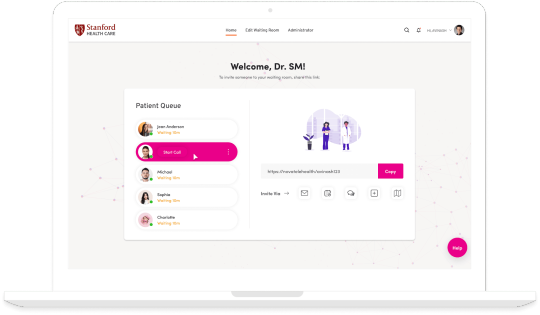
Image
Flexible scaling: White label platforms, suitable for telemedicine app development, easily scale as your user base grows.
Latest features: Leverage innovations like AI diagnosis and asynchronous messaging.
Regulatory compliance: Established platforms ensure compliance with healthcare regulations.
Proven technology: Avoid technology risks and glitches of untested software..
6 Critical Factors to Consider in a White Label Telehealth Partner
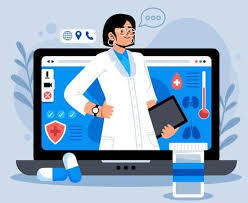
Image
With many vendors offering white label telehealth software solutions, how do you select the right partner for your telemedicine apps?
Here are key factors to consider:
1. Proven Experience and Expertise
Partner with an established telehealth vendor with many years of experience, not a new entrant. Look for proven success delivering similar large-scale implementations in your industry.
Ask for case studies and client references to verify capabilities. Seek out partners who stay ahead of evolving regulations and guidelines.
2. Flexible Business and Pricing Models
Avoid vendors who lock you into long, rigid contracts. Look for partners offering customized options that meet your budget and scale as your program grows. Month-to-month fees, revenue sharing models, and usage-based pricing give you flexibility.
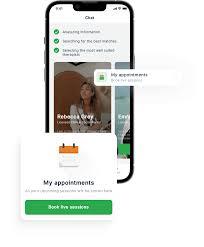
Image
3. Robust and Configurable Technology Platform
Assess the provider's technology stack and architecture. Key elements include:
- Native mobile apps for omni-channel access, crucial for telemedicine app development
- APIs for easy integration with EHRs and internal tools
- Configurable clinical workflows
- AI capabilities like automated triage and health risk assessments
- Analytics dashboards and custom reporting
Prioritize scalable platforms that give you control to tailor experiences.
4. Extensive Practitioner Network and Staffing Models
Having on-demand access to licensed, credentialed clinicians is a must. Verify the provider has a nationwide practitioner network across primary care, behavioral health, and specialties. Also confirm they support leveraging your own employed doctors.
5. Medical Operations and Compliance
A partner handling the medical side is critical for speed. Ensure they provide intake processing, eligibility checking, documentation and other operational support. Rigorously vet their protocols for clinician vetting, licensing, credentialing and training.

Image
6. Implementation Support and Post-Launch Partnership
The right partner doesn't just hand off software and leave. Look for dedicated support for change management, rollout, training and optimization. Conduct user acceptance testing before launch. After launch, seek ongoing enhancements, new feature releases, quarterly business reviews, and 24/7 technical assistance.
Now that we've covered the partner evaluation criteria, let's explore the technical capabilities your platform should deliver.
Must-Have Features in a Robust Telehealth Platform for Telemedicine Apps
The telehealth solution should provide a stellar experience for providers and patients, especially for telemedicine apps. These features are vital:
Key Video Visit Capabilities
Telehealth Platform Remote Monitoring Features
HD video resolution (720p+)
Connectivity for Bluetooth peripherals (scales, BP monitors, glucose meters)
Screen sharing
Custom surveys and chronicle care management prompts
Remote camera control
Automated health metric data analysis and trend identification
HIPAA-compliant infrastructure
Patient engagement tools (reminders, education, chat)
For Patients
- Intuitive mobile app for on-the-go access
- Secure video consultations with screen sharing
- Remote patient monitoring with connected devices
- Asynchronous messaging for non-urgent inquiries
- Prescription management and integration with pharmacies
- Payment and billing management

Image
For Providers
- Provider mobile app and web portal
- Tools to manage patient appointments and records
- Telehealth workflow directly integrated with EHR
- ePrescribing and prescription tracking
- Secure video calls with remote diagnostic tools
- Asynchronous messaging threads with patients
- Referrals management and transitions of care
Administrative Features
- Performance dashboards and analytics
- Custom reporting on utilization and outcomes
- Patient management tools
- Configurable settings for providers, services, locations
- Robust data security and access controls
- HIPAA-compliant messaging and infrastructure
- Integrations with billing, claims, and EHR systems

Image
Implementation and Support
- Quick onboarding and training
- Technical and clinical support teams
- Ongoing platform enhancements and feature releases
- User acceptance testing and change management
- Custom integrations with internal systems
- Scalable infrastructure and backups
FAQs on White Label Telehealth Solutions
Can we integrate a white label telehealth platform with our EHR?
Yes, reputed providers enable easy integration with EHRs via APIs and HL7 interconnectivity. This allows a seamless workflow for telemedicine app development.
How long does implementing a white label telehealth solution take?
With an experienced partner, you can launch a branded telehealth service in 4-6 weeks. The vendor handles technical setup while you focus on change management and marketing for your telemedicine applications.
What telehealth trends are shaping the industry in 2023?
Top telehealth trends include greater chronic care management, expansion into mental health services, integration with in-person care, and enterprise-grade capabilities like automation and analytics.
These trends significantly improve the landscape of telemedicine app development.
How does telehealth benefit healthcare organizations?
Key benefits include increased patient access, reduced costs through avoided emergency department visits, improved outcomes and patient satisfaction, expanded revenue with new virtual care services, and optimized clinician workflows for telemedicine apps.
What telehealth modalities are available?
Platforms offer live video consultations, remote patient monitoring with connected devices, asynchronous messaging, e-prescription management, mental health therapy, nutrition services, and more for comprehensive telemedicine app development.
Conclusion
Telemedicine app development industry is transforming healthcare access and delivery. White label solutions allow even small to mid-sized healthcare organizations to quickly deploy telehealth software solutions at scale. The key is choosing an experienced technology partner that provides a robust and customizable platform.
If you're looking for a proven telehealth app development provider, connect with Consagous Technologies, a leading telemedicine app development company. With over a decade of experience delivering custom healthcare software and mobile apps, Consagous is a leading innovator in white label telehealth solutions. Schedule a free demo to learn more about their HIPAA-compliant platform, flexible business models, and successful client deployments.
You can rapidly launch telehealth under your brand backed by cutting-edge technology and stellar support. Contact to get started!
0 notes
Text
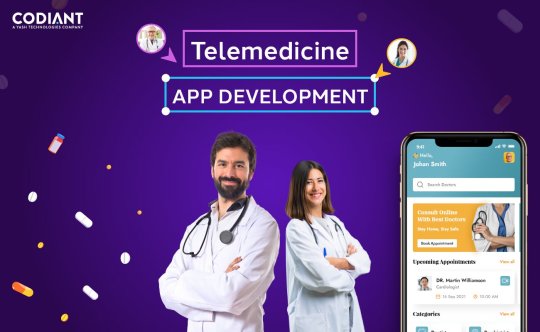
Teledocto- Market ready Telehealth app for doctors with specific features
Teledocto is a white labelled mobile app which can customized easily according to your business need of telemedicine services. It has in-build features of online scheduling file and screen sharing, remote monitoring. Let us help you with your ideas!!
#telemedicine app development services#telemedicine app development#telemedicine software development#telemedicine app development company#telehealth app development#telehealth app development company#hire telemedicine app developers
0 notes
Text

The benefits and features of telemedicine software for providers, focusing on the telehealth solutions available for providers, including white-label telemedicine options, virtual doctor apps, and the role of telemedicine software companies in shaping the future of healthcare delivery.
0 notes
Text
Practo clone
On-demand healthcare means that patients don't have to wait in long lines to see a doctor. With on-demand services, patients can schedule visits with their doctors at their convenient times.
Medical records are kept in an electronic database where other doctors can simply access them to offer second opinions on a patient's condition.
Practo clone: Patients can quickly and easily use the app's search criteria to locate specialists in any medical discipline. The patient can research the doctors' backgrounds and qualifications, which can help them get reliable care.
Tired of hearing about the benefits of telemedicine and ready to create your own service? Then, team up with us for your Practo clone app development needs. To help you succeed in the healthcare market, we provide white-label solutions loaded with cutting-edge capabilities. Send us a message to express your curiosity!
For More Information:
Visit us : https://www.omninos.in/practo-clone-app-development.php
Call US: +91 99888 80293 , +91 98552 84348 , +91 99888 63636
Email US: [email protected]
Follow Us on Facebook -: https://www.facebook.com/omninosTechnologies
Follow Us on Twitter -: https://twitter.com/omninoss
Follow Us on Instagram -: https://www.instagram.com/omninosinsta/
Follow Us on Linkedin -: https://www.linkedin.com/company/omninos-solutions/
Follow Us on Behance -: https://www.behance.net/omninos
Follow Us on Dribble -: https://dribbble.com/iapp_omninos
1 note
·
View note
Text
From EHR to Telemedicine: The Ultimate HMS Checklist
As a healthcare entrepreneur or startup, choosing the right hospital management software (HMS) solution can make all the difference in streamlining your operations and delivering exceptional patient care. With the rapid advancements in medical technology, the features offered by HMS platforms have become increasingly sophisticated, catering to the diverse needs of modern healthcare facilities.
Let's dive into the top features you should consider when selecting a hospital management software solution:
Patient Registration and Scheduling
A seamless patient registration and scheduling process is the cornerstone of any efficient HMS. Look for solutions that offer intuitive interfaces, allowing patients to easily book appointments, update their personal information, and receive timely reminders. This not only enhances the patient experience but also helps your staff manage the influx of patients more effectively.
Electronic Health Records (EHR)
The ability to maintain comprehensive electronic health records is crucial for coordinated patient care. Opt for an HMS that integrates a robust EHR system, enabling your medical staff to access and update patient histories, test results, and treatment plans with ease. This feature promotes better decision-making, reduces the risk of errors, and ensures continuity of care.
Billing and Revenue Cycle Management
Efficient billing and revenue cycle management are essential for the financial health of your healthcare organization. Choose an HMS that streamlines the invoicing process, handles insurance claims, and provides detailed financial reporting. This can help you optimize cash flow, reduce billing errors, and ensure timely reimbursements.
Inventory and Supply Chain Management
Effective inventory and supply chain management can significantly impact your hospital's operational efficiency. Look for an HMS that offers real-time inventory tracking, automated ordering, and supply chain optimization. This can help you avoid stockouts, minimize waste, and ensure the availability of critical medical supplies.
Staff Scheduling and Workforce Management
Maintaining an efficient and well-coordinated workforce is essential for delivering high-quality patient care. Choose an HMS that includes robust staff scheduling and workforce management features, such as shift planning, time-off requests, and performance tracking. This can help you optimize staffing levels, reduce overtime costs, and improve employee satisfaction.
Telemedicine and Remote Patient Monitoring
In the post-pandemic era, the integration of white label telemedicine software and remote patient monitoring capabilities has become increasingly important. Opt for an HMS that seamlessly incorporates these features, enabling your medical staff to conduct virtual consultations, monitor patient vitals, and provide personalized care from a distance. This can improve access to healthcare, especially for patients in remote or underserved areas.
Analytics and Reporting
Comprehensive data analytics and reporting capabilities are crucial for making informed decisions and improving overall hospital performance. Look for an HMS that offers advanced analytics, dashboards, and customizable reporting tools. This can help you track key performance indicators, identify areas for optimization, and make data-driven decisions to enhance patient outcomes and operational efficiency.
Mobile Apps and Accessibility
In today's digital landscape, the availability of mobile apps and accessibility features can greatly enhance the user experience for both patients and staff. Seek out an HMS that offers a user-friendly mobile app, allowing patients to manage their appointments, access their medical records, and communicate with their healthcare providers on the go. Additionally, ensure that the HMS solution prioritizes accessibility features, such as multilingual support and accommodations for individuals with disabilities.
Data Security and Compliance
As a healthcare organization, the protection of sensitive patient data is of utmost importance. When evaluating HMS solutions, pay close attention to the platform's data security measures, encryption protocols, and compliance with industry regulations, such as HIPAA. This will help safeguard your patients' information and maintain the trust of your community.
Customization and Scalability
Finally, consider the customization and scalability capabilities of the HMS solution. Opt for a platform that can be tailored to your specific needs, whether it's integrating with your existing systems, automating specific workflows, or expanding to accommodate future growth. This flexibility will ensure that your HMS solution evolves alongside your healthcare organization.
By carefully considering these top features, you can select a hospital management software solution that truly empowers your healthcare organization to deliver exceptional patient care, optimize operational efficiency, and drive long-term success.
Remember, the right HMS can be a game-changer for your healthcare startup or enterprise. Invest the time to research, evaluate, and choose a solution that aligns with your unique needs and vision for the future of your hospital or clinic.
Ready to take your healthcare organization to new heights? Explore our telemedicine app solutions and hospital management software offerings to find the perfect fit for your business. Let's embark on this transformative journey together!
Conclusion
In the rapidly evolving healthcare landscape, the right hospital management software solution can be the key to unlocking your organization's full potential. By prioritizing features like patient registration, electronic health records, billing, inventory management, staff scheduling, telemedicine, analytics, and data security, you can streamline your operations, enhance patient experiences, and drive sustainable growth.
As a healthcare entrepreneur or startup, choosing the right HMS solution is a critical decision that can have far-reaching implications for your business. Take the time to carefully evaluate the options, understand your unique needs, and partner with a trusted provider that can deliver a customized, scalable, and secure platform to support your vision.
Remember, the right HMS is more than just a software tool – it's a strategic asset that can transform the way you deliver healthcare services and position your organization for long-term success. Embrace the power of technology, and let's embark on this exciting journey together!
#hospital#technology#healthcare#telehealth#telemedicine#hire developers#hire app developer#mobile app development#hire mobile app developers#ios app development#android app development#hire software developer#hire web developer
0 notes
Text
Developing a white-label telemedicine platform allows healthcare providers to meet the growing demand for convenient and accessible healthcare services.
With the ability to customize and brand the platform, healthcare providers can establish their virtual presence quickly and provide seamless communication between doctors and patients. By leveraging these platforms, healthcare providers can revolutionize the way healthcare is delivered, ensuring accessibility, convenience, and quality care for all. If you’re ready to harness the power of white-label telemedicine platforms, EMed HealthTech – a telemedicine app development company is here to help.
0 notes
Text
Unlocking Seamless Communication with White Label Click to Call API
Introduction
In the digital age, communication is at the heart of every business, whether it's connecting with customers, coordinating within teams, or resolving issues quickly and efficiently. The need for instant and effortless communication has driven the development of various tools and technologies. One such tool, the White Label click to call service provider in usa, is revolutionizing the way businesses connect with their audience and team members. In this article, we will explore the significance of White Label Click to Call APIs, their benefits, and the myriad ways they enhance communication solutions.
What Is a White Label Click to Call API?
A White Label click to call solution for business in usa is a robust application programming interface that enables businesses and developers to integrate "click to call" functionality into their applications, websites, or customer support platforms. This API provides a simple and intuitive way for users to initiate voice calls with a single click, streamlining communication and enhancing user engagement.
The Benefits of White Label Click to Call APIs
Instant Communication: White Label Click to Call APIs offer a swift and direct way to establish real-time voice connections. Users can initiate voice calls instantly with a single click, eliminating the need for dialing phone numbers or exchanging contact information.
Improved Customer Service: Businesses can use click to call API solutions in usa to provide exceptional customer support. Customers can easily reach out to support agents, sales representatives, or technical experts, leading to faster issue resolution and increased customer satisfaction.
Enhanced User Experience: Integrating click to call functionality into websites and applications enhances the user experience. It simplifies the process of getting in touch with customer service or sales teams, making it more convenient for users.
Increased Conversion Rates: For businesses, Click to Call APIs can significantly improve conversion rates. By reducing the friction in reaching out to the sales team, potential customers are more likely to take the step to connect, leading to higher conversion rates.
Branding and Customization: White Label Click to Call APIs can be customized to align with the branding and design preferences of the business. This ensures that the click-to-call feature seamlessly blends with the overall brand identity.
Data Analytics: Click to Call APIs often come with robust analytics and reporting features. This enables businesses to gain valuable insights into call volume, duration, and user behavior, which can inform strategic decisions.
Cross-Platform Compatibility: These APIs are typically designed to work seamlessly on various platforms, including web, mobile apps, and desktop applications. Users can access the click-to-call feature on their preferred devices without limitations.
Cost-Efficiency: Implementing a Click to Call API is a cost-effective solution compared to traditional telephony systems. It eliminates the need for maintaining expensive hardware and telephone lines.
Use Cases for White Label Click to Call APIs
Customer Support: Companies can embed Click to Call APIs on their websites, allowing customers to instantly connect with support agents for assistance, resulting in quicker issue resolution.
Sales and Lead Generation: Businesses can use the API to capture leads and sales opportunities by enabling potential customers to easily contact sales representatives.
Healthcare and Telemedicine: In the healthcare industry, Click to Call APIs can facilitate patient-doctor communication, appointment scheduling, and remote consultations.
On-Demand Services: On-demand service providers like ride-sharing and food delivery companies can leverage Click to Call APIs to enhance communication between customers and service providers.
Job Portals: Job portals can offer candidates a seamless way to connect with employers for job inquiries or interviews.
Conclusion
White Label Click to Call APIs have become invaluable tools for businesses and developers looking to enhance their communication solutions. They streamline the process of connecting with customers, improve customer support, and boost user engagement. Whether you're in e-commerce, healthcare, customer service, or any other industry, implementing a click to dial software in usa can be a game-changer in delivering seamless and efficient communication experiences. As technology continues to evolve, the role of Click to Call APIs in shaping the future of communication cannot be underestimated.
About Company : Voxvalley is the most solid and spearheaded supplier of value driven business correspondence items to different organizations in light of cutting edge mechanical necessities. We give the answers for assemble the most captivating and gainful communications that assist organizations with building their client base. With the reception of required changes in the business correspondence model, we investigate making correspondences savvy, adaptable, and exceptionally customized. We work to reconsider the business interchanges biological system joined with cooperation.
0 notes
Text

Your App + Your Brand + Your Patients A white-label, Patient-Engagement, Telemedicine mobile app that helps grow your medical practice revenues and personalize patient care.
#hospitality#hospital#doctor#healthclinic#clinic#medicine#medical#doctorlife#patientsafety#patientcare#ICU#OPD#OPDOnline#patientexperience#DoctorCare#webapphealing#nurse#nursinghome#healthcare#healthandsafety#onlinedoctorconsultation#onlinedoctors
1 note
·
View note